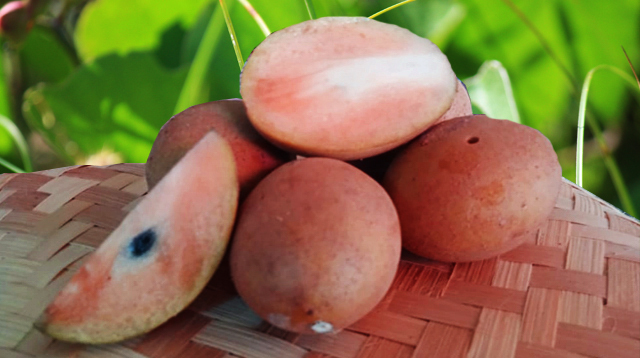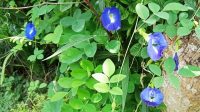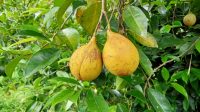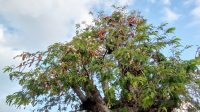- TEMPTING reddish brown flesh of sappodila does not attract people but also fruit bats
- This backyard fruit tree is sometimes also taken advantage for shady tree to have a rest in the afternoon
Sappodila (Manilkara zapota) is a long-lived local fruit tree. Sapodilla is a fruit plant belonging to the sapodilla class (Sapotaceae) which is said to have come from Central America and Mexico. It is a tropical plant that is easily adaptable so that it is easily cultivated in various regions, including in Bali (Indonesia).
Other than being cultivated commercially, sapodilla trees are also widely planted in the yard as shady tree or backyard where people have a rest in the afternoon after doing activities. Therefore, in season this fruit is easy to find in the market.
The tree is large and shady, low-branched and can grow to a height of 30-40 meters. This plant can be propagated by seeds or by grafting.
Judging from its physical appearance, the sapodilla fruit is short-stemmed, oval in shape, reddish brown to yellowish on the outside with brown rough scales that peel easily. The skin is thin, with soft flesh and sometimes gritty, reddish brown to yellowish. Sapodilla is preferred mainly because of its sweet taste and soft flesh.
Most of the sapodilla fruit is eaten fresh as a table fruit. Sapodilla juice can also be concentrated into syrup, or fermented into wine or vinegar. The sap can be used as glue or varnish.
Sapodilla can flower and bear fruit throughout the year, but generally there is one or two peak fruiting seasons. In Indonesia, the peak season may fall between June-August.
After picking, the brown sappodila should be cleaned with water and a cloth or coconut fiber. If the skin color is slightly yellowish, it indicates to be old enough to be picked, but if it looks green, on the way round. The freshly picked fruit is indeed still hard, and needs to be stored for 3-7 days so that it becomes ripe and soft, to make it delicious to eat.
Fruit that is ripe on the tree will usually be targeted by fruit bats. It may be eaten on the spot or flown into a tree as a base. Well, if you only have one or two trees, the fruit bat attack might be tricked by putting up a net.
In Bali, a part from being consumed, this sapodilla is also used to fill offerings because the local government recommends using local fruits for the content of ritual offerings. Firstly, it is meant to preserve local fruits. Secondly, the policy is also intended to empower local fruit farmers so that their products are absorbed in the market.











